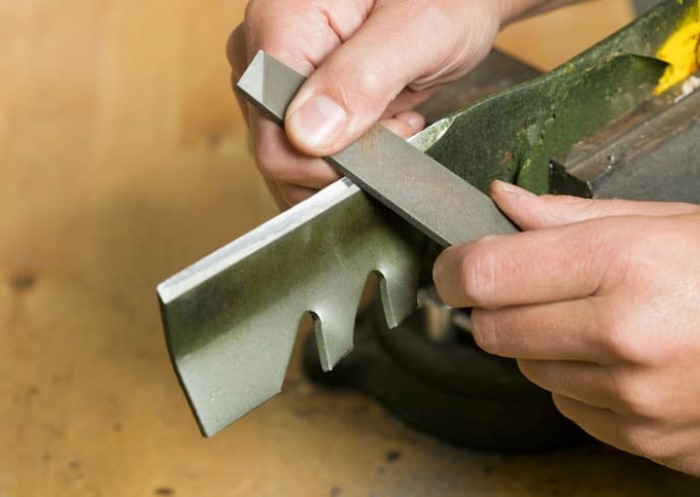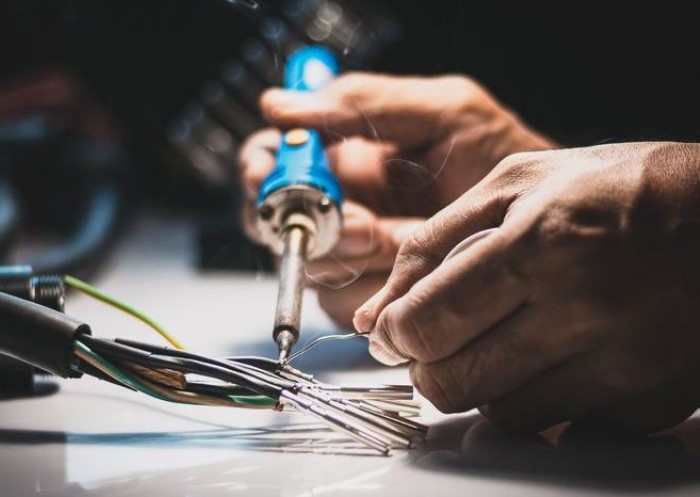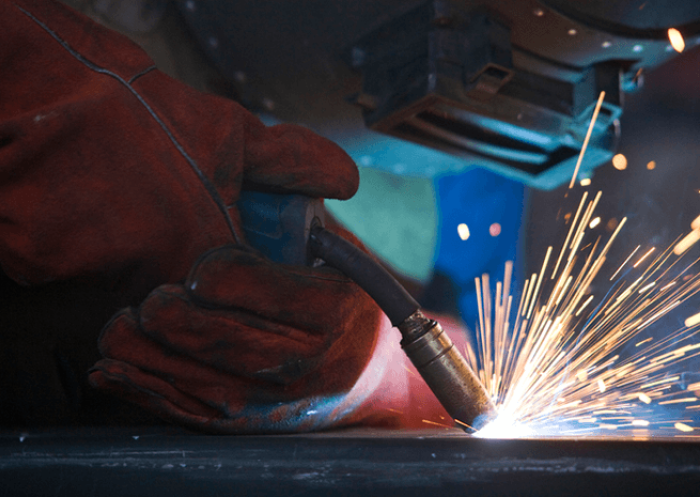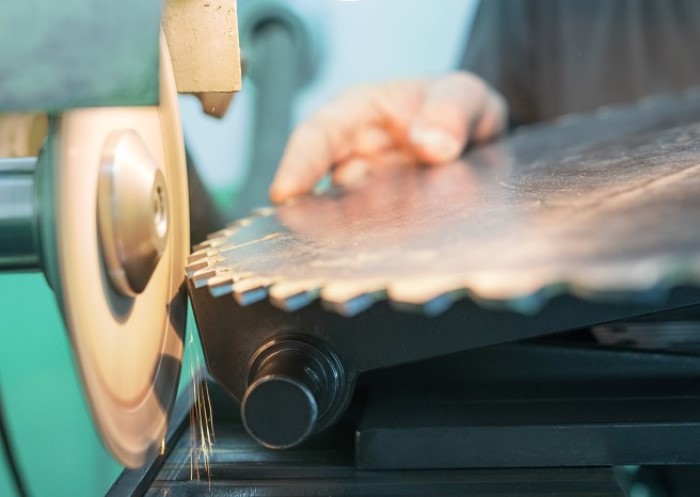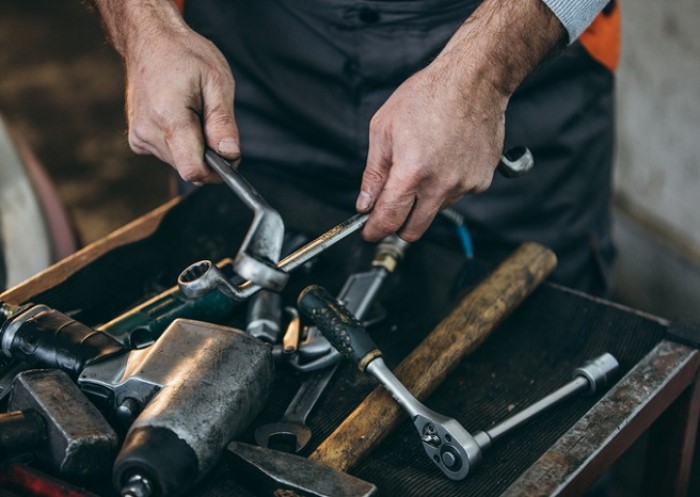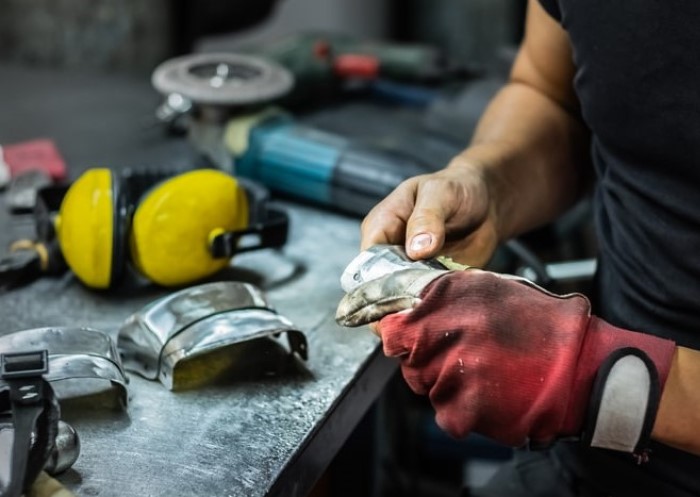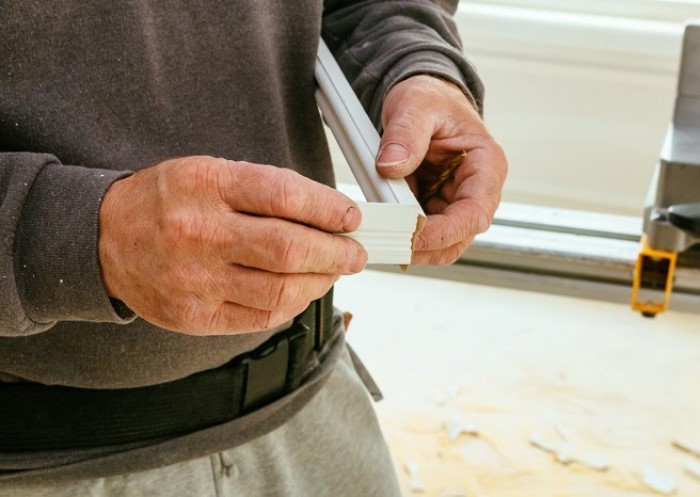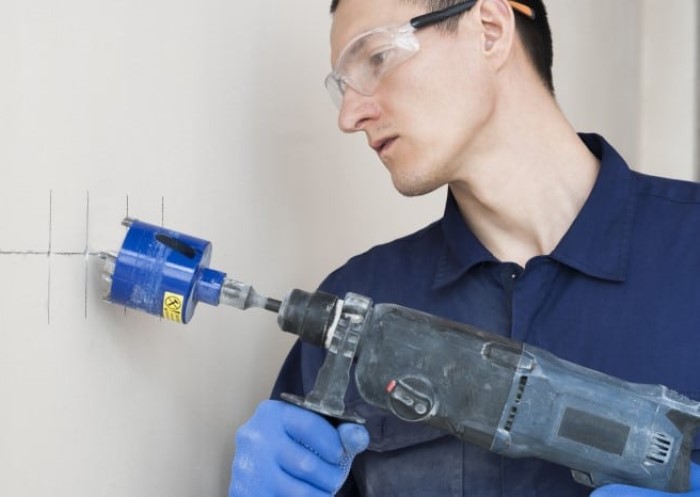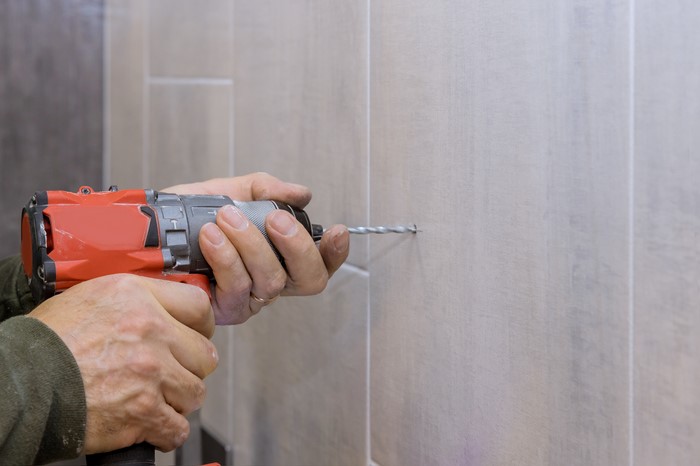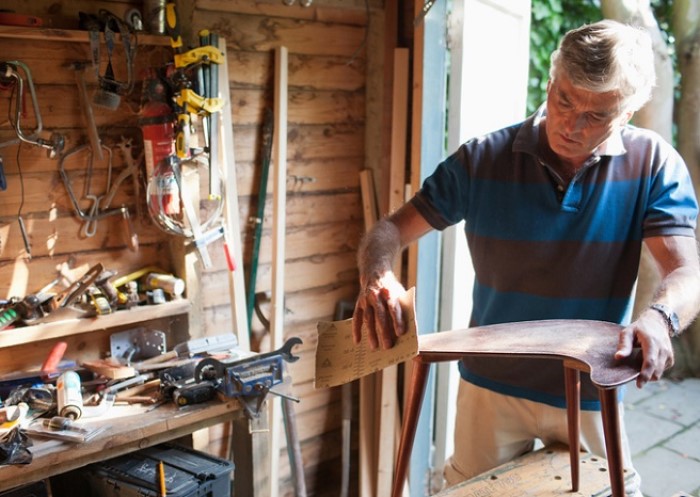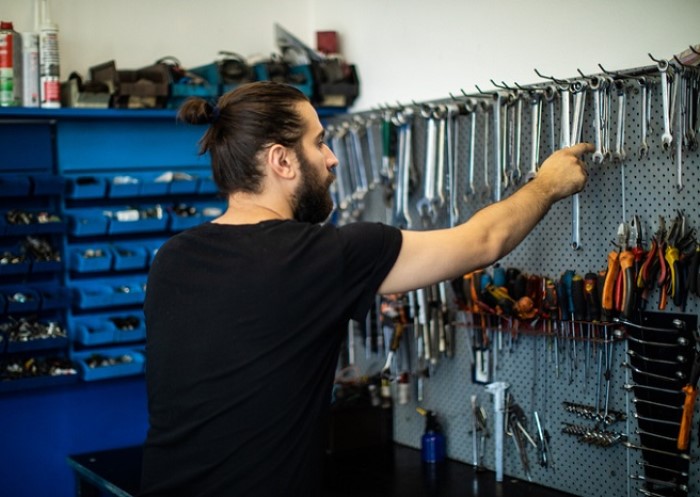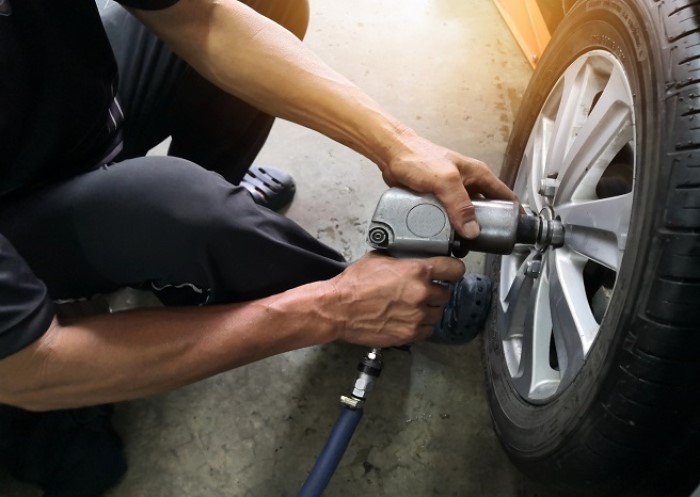Table of contents
Not only do your hedges need regular pruning to grow healthy and dense, but the tool required for this also needs appropriate attention to ensure that it works properly. In addition to thorough cleaning, sharpening your hedge cutter blades regularly is particularly important. This applies to both manual and motorised devices. Learn how you can maintain your hedge trimmers, when it is advisable to have the tool sharpened by a professional, and how to sharpen hedge trimmers yourself.
Why is it important to maintain and sharpen hedge trimmer blades?
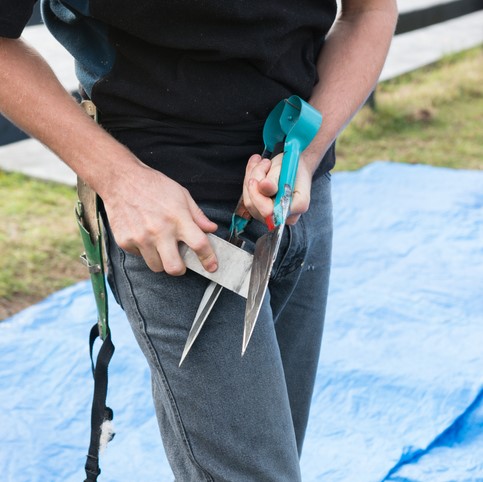
You may be familiar with this situation: Trimming your hedges requires an enormous amount of effort and the cut surfaces of the branches and twigs are not smooth but fibrous. The reason for this is working with blunt hedge trimmers. Proper care is essential to keep your tool sharp for a long time.
Every time you cut your hedges, plant sap and wood dust stick to the blades. To avoid premature wear, you need to prevent such plant residues from settling and gumming up. You can do this by maintaining your hedge trimmer properly after each use:
- If branches and leaves are still hanging from the blades, first remove them roughly with a suitable brush. Make sure that the bristles will not scratch the blades.
- Clean the blades carefully to remove dirt and plant residues. It is best to use resin remover and a soft cloth for this.
- If you do not use the hedge trimmer for a longer period, rub the blades with maintenance oil after thorough cleaning and store them in a dry place. If necessary, also remove the battery or empty the petrol tank.
- Check the function of all parts regularly and renew the corrosion protection, especially after long periods of storage.
When is the right time to sharpen a hedge trimmer?
It is unavoidable: hedge trimmers need to be sharpened. The blades wear out over time because thick branches, hard wood and residues cause them to become blunt. If the blades are dull, you’ll notice that the cut surfaces of the individual branches are no longer smooth but frayed, and the surface of the entire hedge does not look even. The effort required for the work will also feel significantly greater. To minimise this effort, do not wait until the blades are completely blunt to get out your hedge trimmer sharpening tool. On average, the cutting force decreases noticeably after 50 working hours, so you should sharpen your hedge trimmers before reaching this threshold.
How quickly the blades become blunt depends on the frequency of use and care, but also on the quality of the garden tool. If you use your hedge trimmers very frequently, it is worth investing in a professional tool: these are designed for continuous use, are very robust and made from low-wear materials. The blades are made of high-quality steel that has been further hardened and made corrosion-resistant using special processes.
Sharpen the cutting edges of your hedge trimmers at the same time as your other routine tool maintenance. This ensures that your garden tools are always ready for use and work is quick and easy.
The right grinding tool for the hedge trimmer
When selecting a hedge cutter sharpener, it does not matter whether you want to sharpen manual or electric hedge trimmers. The cutting edges and blades of both are made of steel. Accordingly, you need a suitable abrasive or tool to smooth the hard surface.
- Sharpening steel: As it is made of hardened steel, a sharpening steel cannot grind down the surface, only smooth it. However, as part of the regular maintenance of your hedge trimmers, this is enough to sharpen lightly used blades.
- Sharpening stone: A sharpening stone consists of very hard minerals that can grind steel surfaces. It is moistened before use so that no dust is created during grinding, which could settle in the pores of the stone and render it unusable. The moisture creates a kind of sludge during grinding, which also has an abrasive effect.
- Flat file: A flat file is also used to remove material from the blades. It is easy to use and is ideal for carefully sharpening the blades of the hedge trimmer without removing too much material.
In addition to the filing tool, you will need other accessories:
| Tools / Material | Purpose |
|---|---|
| Brake cleaner | • to thoroughly clean the cutting edges before sharpening |
| Working block and screw clamps | • to secure the blades |
| Sharpening stone | • to deburr the ground surfaces |
| Blade oil or resin remover | • to restore the corrosion protection after grinding |
| Cut-protection gloves and safety goggles if necessary | • to protect yourself from injury |
Have your hedge trimmers sharpened or do it yourself?
If you already have the necessary accessories and can repair your tools yourself, there is nothing to stop you sharpening your hedge trimmers too. However, this is not recommended in every case. When it makes sense to use a professional sharpening service:
- If the hedge trimmer becomes blunt again very quickly after sharpening, this indicates that the manual sharpening performance is not sufficient. With a powerful grinding machine in a professional workshop, the blade will be as good as new again.
- If you have purchased a new branded appliance but don’t know how to sharpen hedge trimmer blades, you should not shy away from the cost of a sharpening service. This is because there is a risk of damaging the blades beyond repair.
You can also sharpen your hedge trimmers using power tools. With an angle grinder and suitable attachment or a cordless screwdriver with a sharpening attachment for hedge trimmers, you can work quickly and save energy. However, there is a risk that you will remove too much material or that the blades will overheat due to the high friction, which could render them unusable.
Work carefully and always ensure sufficient cooling! If you have no experience in tool grinding, it might be better to leave it to the professionals.
How to sharpen your hedge trimmers manually
If you want to sharpen your hedge trimmers yourself, keep in mind these three important aspects: thorough preparation, a conscientious approach, and the right equipment. Here’s how to proceed, step by step:
- Gather protective gear
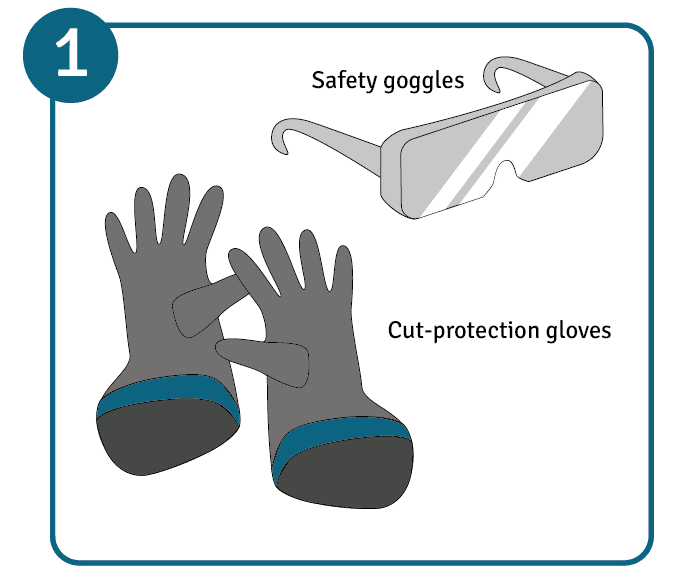 Wear protective gloves made of cut-resistant material throughout your work so that you cannot injure yourself on the blades. In addition, sealed safety goggles protect your eyes from metal dust particles.
Wear protective gloves made of cut-resistant material throughout your work so that you cannot injure yourself on the blades. In addition, sealed safety goggles protect your eyes from metal dust particles. - Prepare hedge trimmers
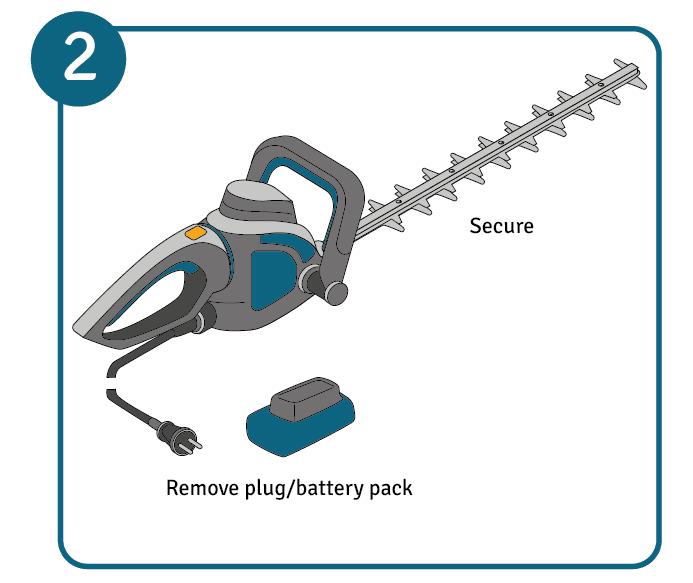 Ensure that motorised hedge trimmers cannot start accidentally. Depending on the model, either disconnect the tool from the power source, or remove the battery or spark plug (for petrol-powered models).
Ensure that motorised hedge trimmers cannot start accidentally. Depending on the model, either disconnect the tool from the power source, or remove the battery or spark plug (for petrol-powered models).
You can either remove the blade to secure and sharpen it, or you can secure the entire hedge trimmer for sharpening. In either case, it is important that the tool cannot slip during work. - Clean the cutting blade
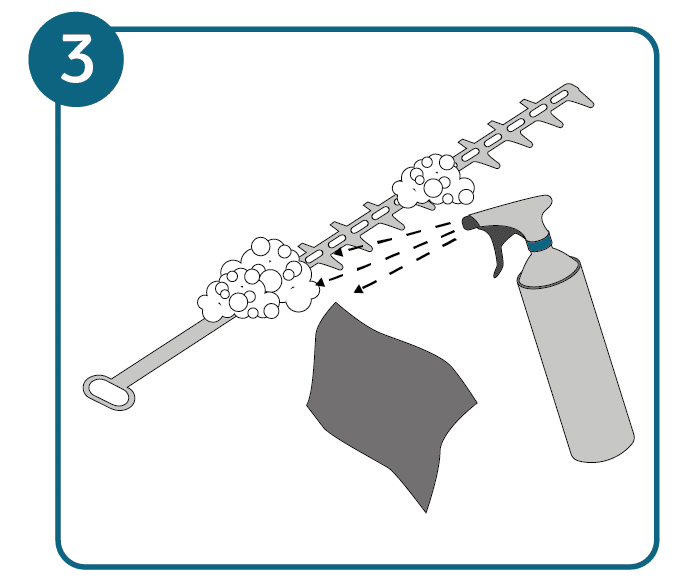 Make sure that the blades are clean and remove any plant residues and rust spots. You can use all the same methods you use to clean other tools. An insider tip for stubborn dirt is brake cleaner.
Make sure that the blades are clean and remove any plant residues and rust spots. You can use all the same methods you use to clean other tools. An insider tip for stubborn dirt is brake cleaner. - File trimmer blades
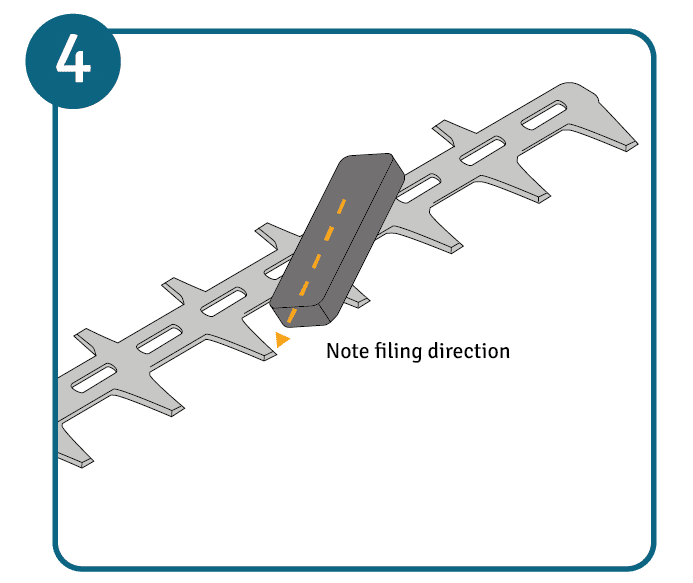 Regardless of which hedge trimmer sharpening tool you use, always work in one direction when filing the blades: the direction of the cutting edge. When moving backwards, lift the file or whetstone, otherwise the edge you have just sharpened will become blunt again. Repeat this movement about 20 times and then continue at the next point. Always take care not to apply too much pressure.
Regardless of which hedge trimmer sharpening tool you use, always work in one direction when filing the blades: the direction of the cutting edge. When moving backwards, lift the file or whetstone, otherwise the edge you have just sharpened will become blunt again. Repeat this movement about 20 times and then continue at the next point. Always take care not to apply too much pressure. - Deburr the grinding edge
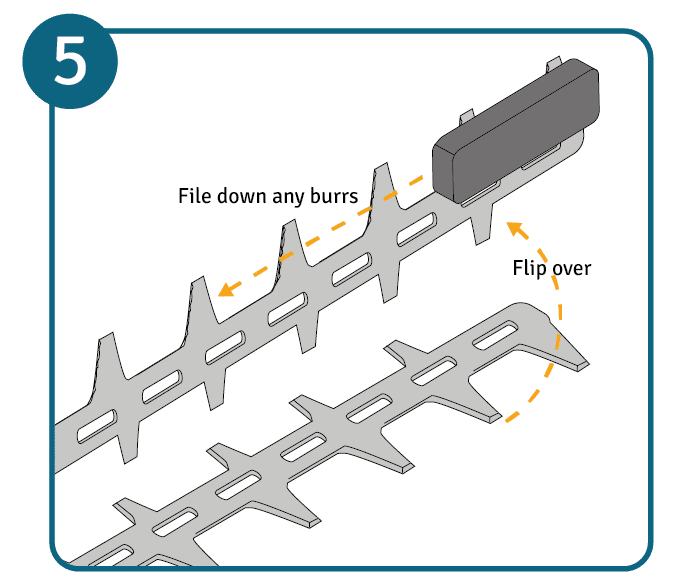 Depending on how hard you have worked the blade, there will be some pronounced burrs on the underside of the sharpened knife. Use the whetstone to carefully remove them and apply as little pressure as possible to the blade.
Depending on how hard you have worked the blade, there will be some pronounced burrs on the underside of the sharpened knife. Use the whetstone to carefully remove them and apply as little pressure as possible to the blade. - Maintain blades
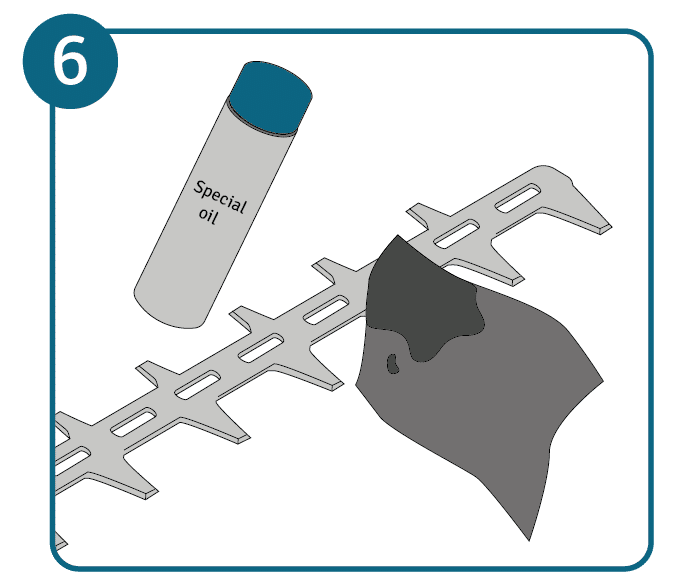 Now carefully rub the blade clean and remove the grinding dust. As the corrosion protection no longer exists after grinding, renew it in the final step with resin remover or special blade oil.
Now carefully rub the blade clean and remove the grinding dust. As the corrosion protection no longer exists after grinding, renew it in the final step with resin remover or special blade oil.
FAQ: Sharpening hedge trimmers
When the cutting surfaces of the individual branches are no longer smooth but fibrous or the effort required to work them increases significantly, it is time to sharpen your hedge trimmers.
It is better not to wait until the blades are completely blunt. You can routinely sharpen the blades after around 50 hours of operation, as the cutting performance will noticeably begin to deteriorate at that point.
You can sharpen your hedge trimmers with a sharpening steel, sharpening stone, or file. It doesn’t matter whether you want to sharpen manual or electric hedge trimmers. In addition to the sharpening tool, you will also need:
• Brake cleaner to thoroughly clean the blades before sharpening
• A fixed working block and screw clamps to hold the blades in place
• A sharpening stone to deburr the ground surfaces
• Special oil or resin remover to restore the corrosion protection after filing
• Work gloves and safety goggles if necessary
If you want to file the cutting edges of your hedge trimmer, you will need a flat file. With this tool, you can easily maintain the correct angle and work without applying too much pressure.
If the cutting edge becomes blunt again very quickly after sharpening, you should use a professional sharpening service. If you have no previous sharpening experience but have purchased an expensive professional tool, you should have your hedge trimmers sharpened by an expert.
Image source:
© gettyimages.de – BanksPhotos, KiraVolkov

